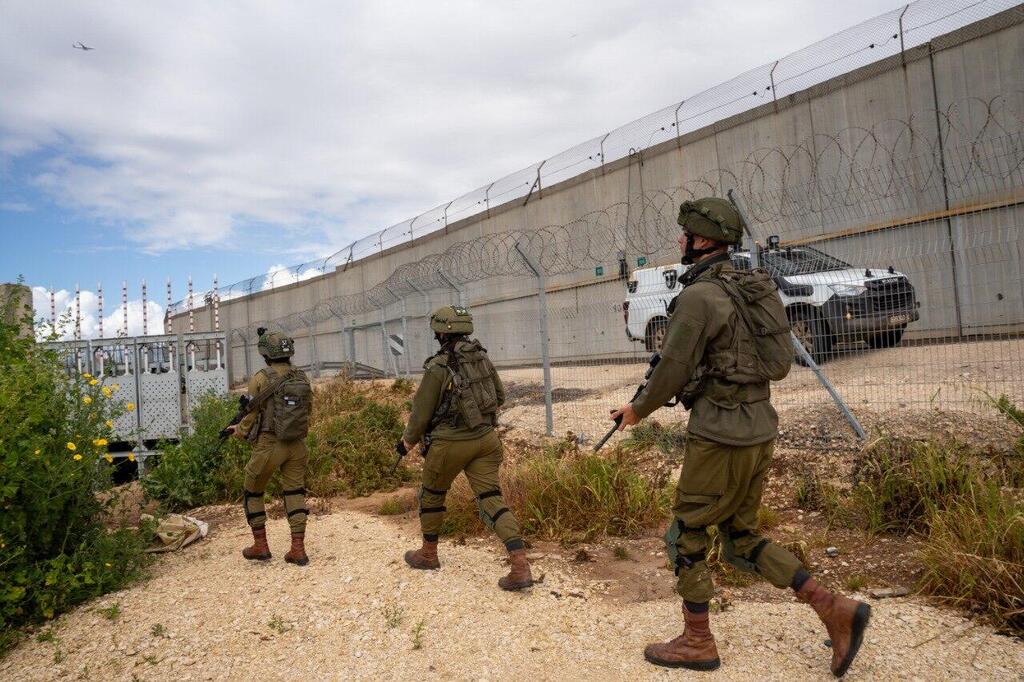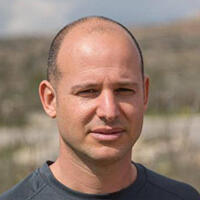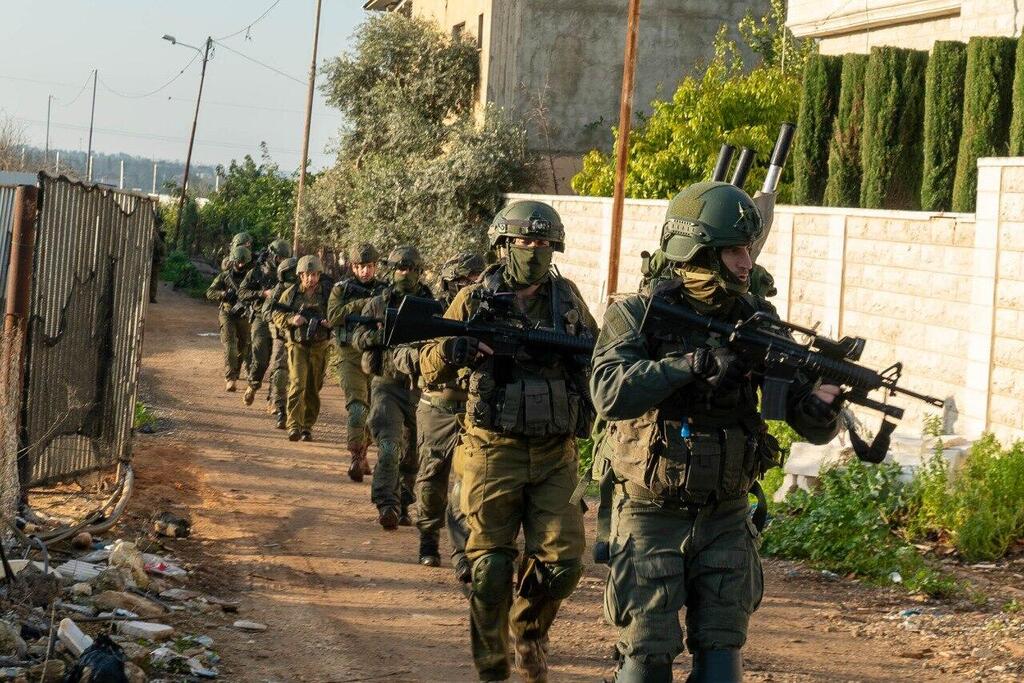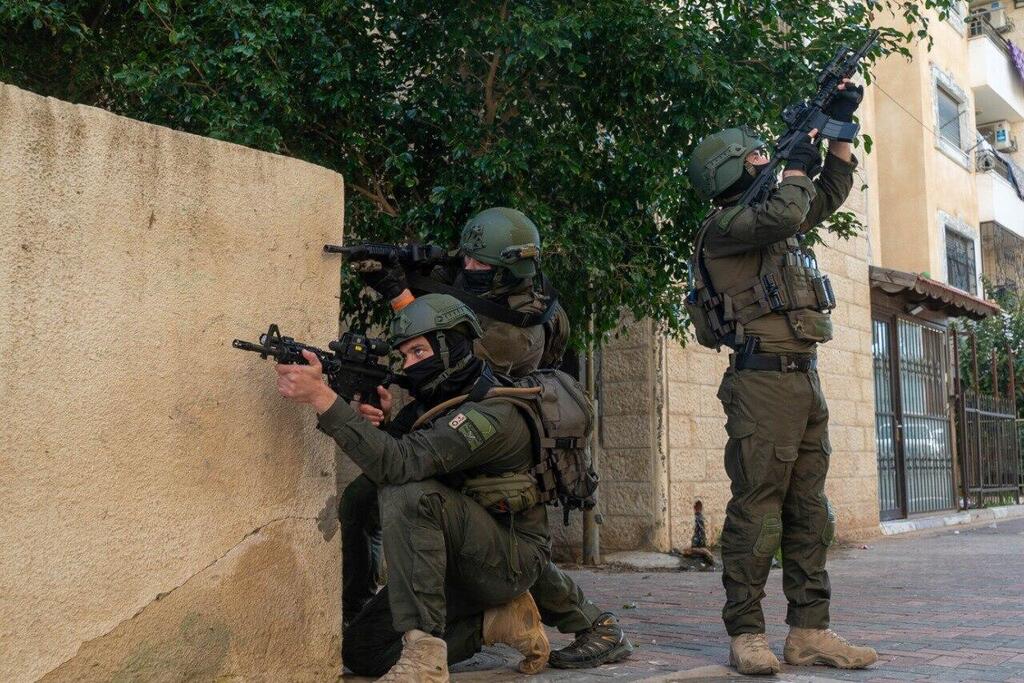"We decided we had to catch him at any cost," a security official involved in the Qalqilya sector told Ynet. "Our forces were inside for hours with nothing happening. Just before 4 a.m., I almost called off the entire operation. Then, suddenly, another team that had entered earlier came under fire. That's when we knew it was him."
"Him" refers to Abu George, also known as Alaa Nazzal, a 29-year-old resident of the West Bank city of Qalqilya. His elimination in December marked a turning point in the IDF 877th Division’s campaign against the burgeoning terror network there.
Israeli security forces eliminate terrorists in Qalqilia, December 2023
(Video: Israel Police)
Nazzal was the mastermind behind the establishment of the terror battalion in Qalqilya, similar to those in Jenin, Nablus, Tulkarem, Jericho and others.
Nazzal received funding from abroad, including from Iran, to establish the battalion. With these funds, he expanded the terror network in the city, setting up command centers, safe houses, monitoring IDF forces, deploying snipers, manufacturing explosives and smuggling significant amounts of weaponry into the urban area.
The 421st Territorial Brigade, commanded by Col. Natanel Shamkha, launched an aggressive operation to suppress a nascent terror cell emerging in Qalqilya. Months after dismantling most of it, details have emerged about the extent of the threat this organization posed, located just a short distance from Kfar Saba and the Sharon cities.
Qalqilya has a population of between 60,000 and 70,000. Unlike other West Bank cities, it doesn’t have a refugee camp, but rather neighborhoods associated with terrorism, such as the Nazzal and Kfar Saba neighborhoods, both known for their high density.
3 View gallery


IDF forces operating near security fence in Qalqilya sector
(Photo: IDF Spokesperson's Unit)
Several months before the war, the IDF noticed an increase in terror attacks emanating from the city. "In the past, we would enter for arrests and face stones and perhaps some Molotov cocktails, but then they started opening fire on us. These were shooting incidents that escalated," explained 421st Territorial Brigade intelligence officer Captain A. "There were weeks when we were caught in shooting attacks that hadn't occurred before. We didn't understand how it was happening."
The Shin Bet and IDF quickly zeroed in on Alaa Nazzal. "Operations in these neighborhoods turned into pursuits with live fire," explained Superintendent Daniel Gapso, commander of Platoon A of the Border Police in Qalqilya.
"They were shooting from passing vehicles, planting explosives, carrying out luring attacks - one even right next to our base at the city entrance. Their audacity grew, and we saw that each time we entered for operations, they were waiting for us, knowing exactly from where we would arrive and where we would depart.
"They employed groups of young boys from the neighborhoods to conduct surveillance for them in exchange for money. The observations were linked to cameras they had placed in the streets. The terrorists were on rooftops near the routes our forces traveled, and they would start shooting whenever our forces entered. They operated in a relatively organized manner. After several such terror operations, we realized that something bigger was at play."
At some point, all leads pointed to Nazzal. The IDF and Shin Bet began to gather intelligence for a preemptive strike, mapping out all the routes used by Abu George.
"He always made sure to be among civilians, who ostensibly were not part of the terror network he had established, to avoid being targeted. He would sit in a well-known café in the city, walk around wearing a baseball cap, and frequently change residences. Sometimes he slept at his mother's house, sometimes at an uncle's or a friend's. Whole weeks were spent raiding these homes, time after time,” said Gapso.
"Meanwhile, the terror network fostered by Abu George grew. If he had four or five operatives in September, by January, the number had increased to over 30. The funds were available, and with the war, Hamas' popularity surged—thus, attempts to emulate the terror battalions in the refugee camps increased."
The terrorists from Qalqilya carried out shooting attacks, mostly against IDF forces, but their primary goal was to fortify the city to prevent IDF entry and, ultimately, launch terror attacks deep into Israeli territory. After intense efforts by Shin Bet and the IDF, this terrorist cell in Qalqilya was dismantled.
"I don't sleep at night," said Col. Shamkha. "I feel a personal responsibility for the lives of 270,000 residents in my sector and another million in the Gush Dan region. I will do everything to protect my sector and ensure no one crosses me."







